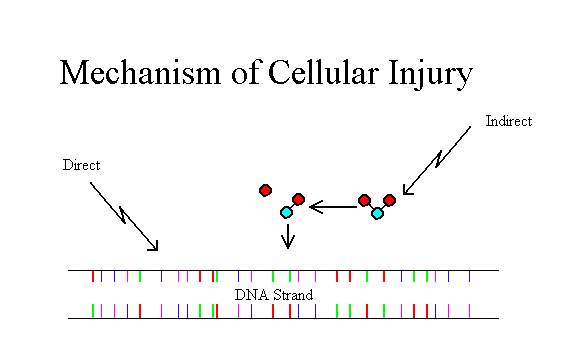![]()
It is important to realize that the carcinogenic, genetic, fetal or embryonic effects previously mentioned are those seen after an acute exposure at the doses listed. Chronic or prolonged doses may not demonstrate these effects. Tissue damage caused by radiation is not unique. The damage that occurs is identical to either a thermal or chemical burn. The human body has the capacity to repair many types of damage, including radiation injuries. It is only when the repair processes are overwhelmed that the effects of radiation are noticeable.
There are two mechanisms by which radiation can cause cell damage, direct and indirect.

The indirect method is by far the more common of the two. A photon of radiation interacts with a water molecule in the body to create a free radical. The free radical then can interact with any other molecule present in the cell. When it interacts with a strand of DNA, it may cause damage or a mutation. This damage can be repaired. If it cannot be repaired or goes unnoticed by the cell, it may cause the previously mentioned carcinogenic, genetic or fetal effects.
Injury by the direct mechanism is less likely. In this case, the photon directly interacts with the DNA to cause damage or mutation. If the photon interacts with other molecules such as proteins or lipids, biologic effects will not be seen.